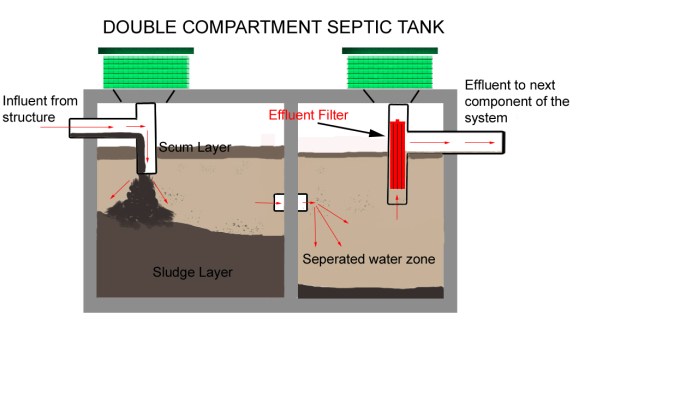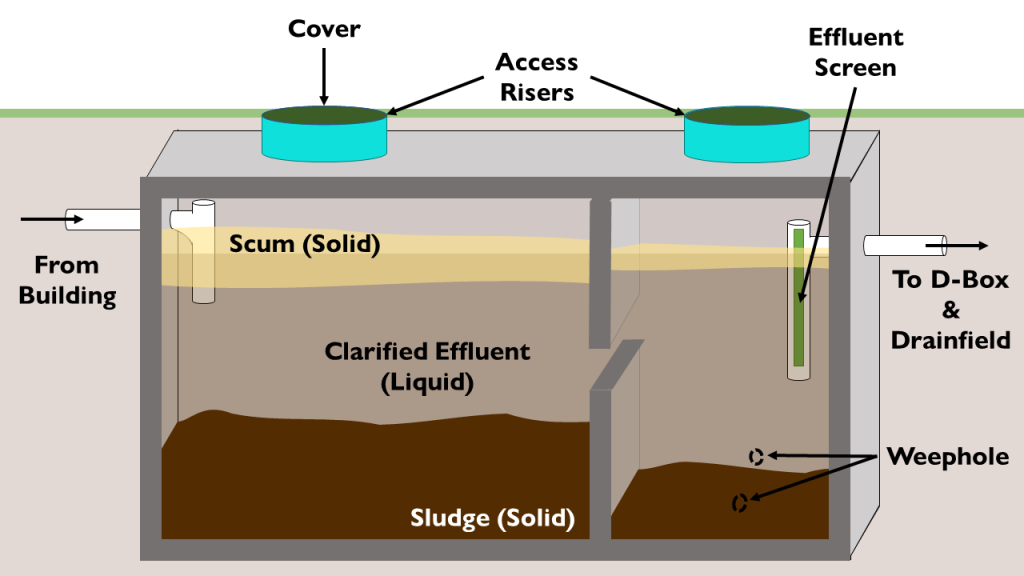In this article, you will learn about the septic tank with pump chamber and its functions and benefits. We will delve into how this system component works and why it is an important part of your septic system. By understanding the purpose of the pump chamber, you will gain insight into how it helps maintain the efficiency and longevity of your septic system. So let’s explore the world of septic tanks with pump chambers together!
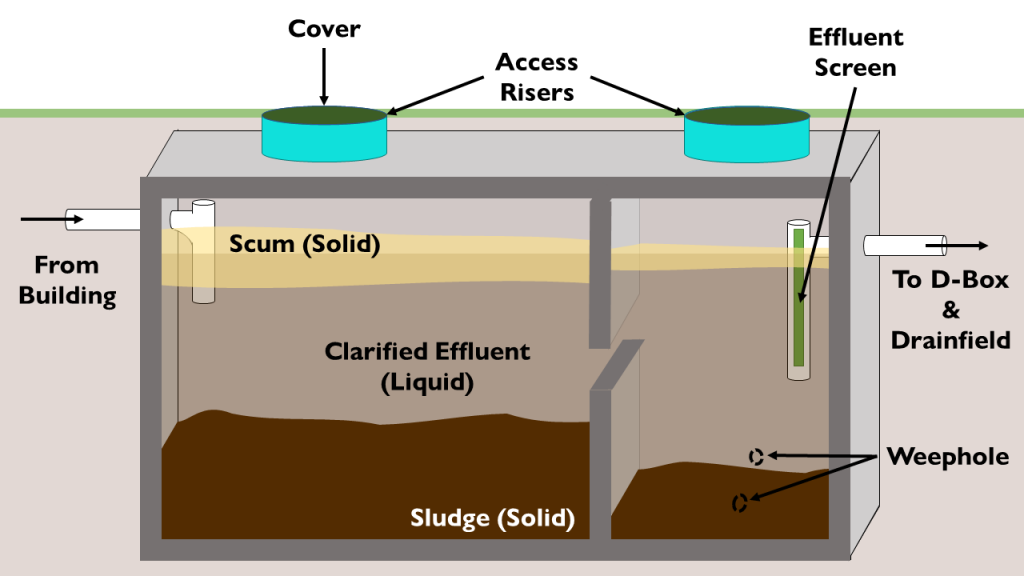
Understanding Septic Systems
Septic systems are a crucial component of many residential properties, particularly in rural areas where access to a centralized sewer system is not feasible. These systems are responsible for efficiently and safely treating the wastewater generated by households. Understanding how a septic system works and its various components is essential for homeowners to ensure its proper functioning and to avoid costly repairs.
The Basics of Septic Systems
A septic system consists of several interconnected components that work together to treat and dispose of wastewater. These components include the septic tank, pump chamber, drainfield, and soil. When wastewater is flushed down the drain, it enters the septic tank, where solid waste settles at the bottom while grease and lighter particles float to the top. Bacteria in the tank help break down the organic matter.
Components of a Septic System
-
Septic Tank: The septic tank is an underground, watertight container typically made of concrete, fiberglass, or plastic. It stores the wastewater from your household and allows solids to settle while letting the liquid pass through into the drainfield.
-
Drainfield: The drainfield, also known as the leach field, consists of a network of perforated pipes buried in trenches filled with gravel or sand. The liquid wastewater, known as effluent, is distributed evenly throughout the drainfield, where it is naturally filtered and treated by the soil.
-
Pump Chamber: The pump chamber, also called a dosing tank, is a crucial component in some septic systems. It is responsible for transporting the effluent from the septic tank to the drainfield. This article will focus on understanding the function and benefits of a septic tank with a pump chamber.
-
Soil: The soil in the drainfield plays a vital role in treating and filtering the effluent before it reaches groundwater. The soil acts as a natural filter, removing impurities, bacteria, and viruses from the wastewater.
Introduction to Septic Tanks
A septic tank is a vital part of a septic system. It is designed to separate and treat the solid and liquid waste before it enters the drainfield. The septic tank’s primary function is to allow the solids to settle at the bottom, while the liquid effluent flows out into the pump chamber or directly into the drainfield.
Septic tanks come in various sizes to accommodate different household needs. The size of the tank depends on the number of bedrooms and occupants in the house. A larger tank is necessary for households with more residents.
The Role of Pump Chambers in Septic Systems
A septic tank with a pump chamber is an alternative to the conventional gravity-fed septic systems. In a gravity-fed system, the effluent flows downhill from the septic tank to the drainfield. However, in some cases, the terrain or local regulations may not allow for a gravity-fed system. This is where a septic tank with a pump chamber comes into play.
What Is a Septic Tank with Pump Chamber?
Definition of a Septic Tank with Pump Chamber
A septic tank with a pump chamber, also known as a pressure distribution system, is designed to overcome the limitations of gravity-fed systems. This system involves the use of a submersible pump that transports the effluent from the septic tank to the drainfield. The pump chamber contains the pump, control floats, and a high-water alarm to regulate and monitor the effluent levels.
The Purpose and Function of a Pump Chamber
The pump chamber serves several essential functions in a septic system:
-
Transporting Effluent: The primary purpose of the pump chamber is to transport the effluent from the septic tank to the drainfield. The submersible pump in the chamber pushes the effluent through a network of pipes leading to the drainfield.
-
Equal Distribution: The pump chamber ensures that the effluent is evenly distributed to each section of the drainfield. This prevents overloading of any particular area and promotes efficient treatment of the wastewater.
-
Pressure Regulation: The pump chamber maintains a consistent pressure within the system. This pressure ensures that the effluent is distributed evenly and at the required rate for effective treatment.
-
Monitoring: The pump chamber includes control floats and a high-water alarm to monitor the effluent levels. The floats activate the pump when the wastewater reaches a certain level and trigger the alarm if the water level exceeds the designated threshold.
How a Septic Tank with Pump Chamber Works
A septic tank with a pump chamber operates using a cyclic process to transport and distribute the effluent. Here’s a step-by-step overview of how the system works:
-
Effluent Collection: Wastewater from the household is collected in the septic tank as in a conventional septic system. Solid waste settles at the bottom, while the liquid effluent rises to the top.
-
Pump Activation: As the effluent level in the septic tank rises, the control floats in the pump chamber detect the change and activate the submersible pump.
-
Effluent Transport: The submersible pump moves the effluent from the septic tank to the pump chamber. It pumps the effluent at a predetermined pressure to ensure equal distribution to the drainfield.
-
Pressure Distribution: The effluent flows from the pump chamber into a network of pipes installed within the drainfield. The pressure created by the submersible pump ensures that the effluent is evenly distributed throughout the drainfield.
-
Soil Treatment: The effluent is naturally treated by the soil as it percolates through the drainfield. The soil acts as a filter, removing impurities and pollutants before the water reaches the groundwater.
-
Return to Septic Tank: Once the treated effluent has percolated through the soil, it returns to the groundwater or natural water bodies.
Benefits of a Septic Tank with Pump Chamber
A septic tank with a pump chamber offers several advantages over traditional gravity-fed septic systems. These benefits make it a popular choice for properties with challenging terrain or high water tables.
Increased Efficiency and Performance
One of the main advantages of a septic tank with a pump chamber is its increased efficiency and performance. The use of a submersible pump allows for more controlled and precise distribution of the effluent. This ensures that each section of the drainfield receives an equal amount of wastewater, promoting optimal treatment.
Reduced Maintenance and Pumping Frequency
A septic tank with a pump chamber can help reduce maintenance requirements and extend the time between pumpings. The even distribution of the effluent in the drainfield prevents overloading of any specific area, reducing the strain on the system. This can result in fewer clogs, backups, and other maintenance issues.
Controlled Wastewater Distribution
The pump chamber allows for more control over the distribution of wastewater. By maintaining a consistent pressure, the system ensures that the effluent reaches every part of the drainfield. This prevents the buildup of excessive water in one area, which can lead to soil saturation and ineffective treatment.
Less Environmental Impact
A septic tank with a pump chamber can have a reduced environmental impact compared to conventional systems. The even distribution and efficient treatment of the effluent minimize the risk of contaminating groundwater or nearby water bodies. Additionally, the controlled pressure helps protect the soil by preventing oversaturation, which can lead to erosion or nutrient runoff.
Installation and Maintenance
Proper Installation of a Septic Tank with Pump Chamber
The installation of a septic tank with a pump chamber should be carried out by qualified professionals to ensure its proper functioning and compliance with local regulations. Here are some key steps involved in the installation process:
-
Assessment: Before installation, the site should be inspected to determine its suitability for a septic system with a pump chamber. Factors such as soil composition, water table level, and property size will dictate the design and installation approach.
-
Permits and Approvals: Obtain any necessary permits and approvals from local authorities before proceeding with the installation. Failure to comply with regulations can result in fines or legal consequences.
-
Excavation: Dig a hole for the septic tank and pump chamber. The size and depth of the hole will depend on the tank and chamber dimensions specified in the design plans.
-
Tank and Chamber Placement: Install the septic tank in the excavated hole. Ensure that it is level and properly supported to prevent shifting or damage. Place the pump chamber adjacent to the tank, connecting it to the tank’s outlet.
-
Plumbing and Electrical Connections: Connect the plumbing pipes from the household to the septic tank inlet. Install the necessary electrical connections for the pump chamber and its control floats.
-
Backfilling and Compaction: Backfill the excavated hole around the septic tank and pump chamber, ensuring proper compaction to prevent settling or shifting.
-
Testing and Inspections: Once the installation is complete, the system should undergo rigorous testing and inspections to ensure its proper functioning and compliance with local regulations.
Maintenance Tips for Septic Tanks with Pump Chambers
Regular maintenance is crucial for the proper functioning of any septic system, including those with pump chambers. Here are some maintenance tips to keep your system running smoothly:
-
Regular Pumping: Schedule regular pumpings to remove accumulated solids from the septic tank. The frequency of pumping will depend on the tank size and household usage. Consult with a professional to determine the appropriate pumping schedule for your system.
-
Check Control Floats: Regularly inspect the control floats in the pump chamber to ensure they are working correctly. Faulty floats can lead to improper activation of the submersible pump or failure to alert you of high-water levels.
-
Monitor Alarm System: Familiarize yourself with the high-water alarm system in the pump chamber. Regularly check the alarm to make sure it is in working order and take immediate action if it is triggered.
-
Protect Drainfield: Be mindful of what goes down your drains to prevent clogs and system overloading. Avoid flushing non-biodegradable items, grease, oils, and chemicals. Additionally, redirect excessive roof runoff away from the drainfield to prevent oversaturation.
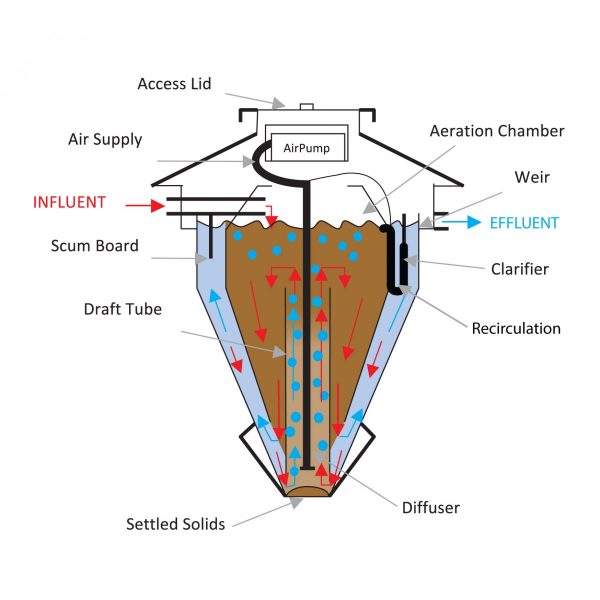
Choosing the Right Septic Tank with Pump Chamber
Selecting the right septic tank with a pump chamber is crucial to ensure optimal performance and longevity. Here are some factors to consider when choosing a system:
Factors to Consider in Choosing a Septic Tank with Pump Chamber
-
Property Size and Usage: The size of the septic tank and pump chamber should correspond to the number of bedrooms and occupants in your home. A professional can help determine the appropriate capacity based on water usage and soil conditions.
-
Local Regulations: Ensure that the system you choose complies with local regulations and codes. Failure to comply can result in fines, legal consequences, or the need for system modifications.
-
Quality and Durability: Invest in a high-quality septic tank and pump chamber made from durable materials. The components should be able to withstand the test of time and environmental factors.
-
Warranty and Service: Choose a system from a reliable supplier that offers a warranty and ongoing service. This ensures that you have access to support and assistance should any issues arise.
Sizing and Capacity Requirements
The sizing of a septic tank with a pump chamber depends on the number of bedrooms and occupants in the house. Most local regulations provide guidelines for the minimum tank size based on these factors. Additionally, the capacity of the pump chamber should correspond to the output of the septic tank and the drainfield’s size and configuration.
Types of Pump Chambers Available
There are different types of pump chambers available, including single-compartment and multi-compartment configurations. Single-compartment pump chambers are more common and suitable for most residential applications. Multi-compartment pump chambers, on the other hand, are designed for commercial or larger-scale systems where additional storage capacity is required.
Selecting a Reliable Supplier
Choosing a septic tank with a pump chamber requires careful consideration and research. Look for a reputable supplier with a track record of providing high-quality systems. Reading customer reviews and seeking recommendations from local professionals can help you make an informed decision.
Common Issues and Troubleshooting
Common Problems with Septic Tanks with Pump Chambers
Despite proper installation and maintenance, septic tanks with pump chambers can experience various issues. Some common problems include:
-
Pump Failure: The submersible pump in the pump chamber may fail due to mechanical issues, power outages, or electrical failures. This can lead to an interruption in the effluent transport and distribution.
-
Float Malfunction: The control floats in the pump chamber can malfunction, causing improper activation of the pump or failure to trigger the high-water alarm when needed. This can result in system overload or wastewater backup.
-
Clogs and Blockages: Clogs or blockages can occur in the plumbing pipes connecting the septic tank to the pump chamber or in the pump chamber itself. This can disrupt the proper flow of effluent and lead to system failure.
Troubleshooting Tips for Pump Chamber Issues
If you encounter any issues with your septic tank with a pump chamber, it is essential to address them promptly to prevent further damage or system failure. Here are some troubleshooting tips:
-
Check Power Supply: If the submersible pump is not functioning, check the power supply to ensure it is connected and providing electricity. Reset any tripped circuit breakers. If the pump still does not activate, contact a professional for repairs.
-
Inspect Floats and Alarm: Inspect the control floats to ensure they are functioning and free of any debris or obstructions. Test the high-water alarm system to confirm it is working correctly. If necessary, clean or replace faulty floats or alarm components.
-
Clear Clogs: If you suspect a clog or blockage in the plumbing system, attempt to flush it out using a plumbing snake. If the issue persists, consult a professional to avoid causing further damage.
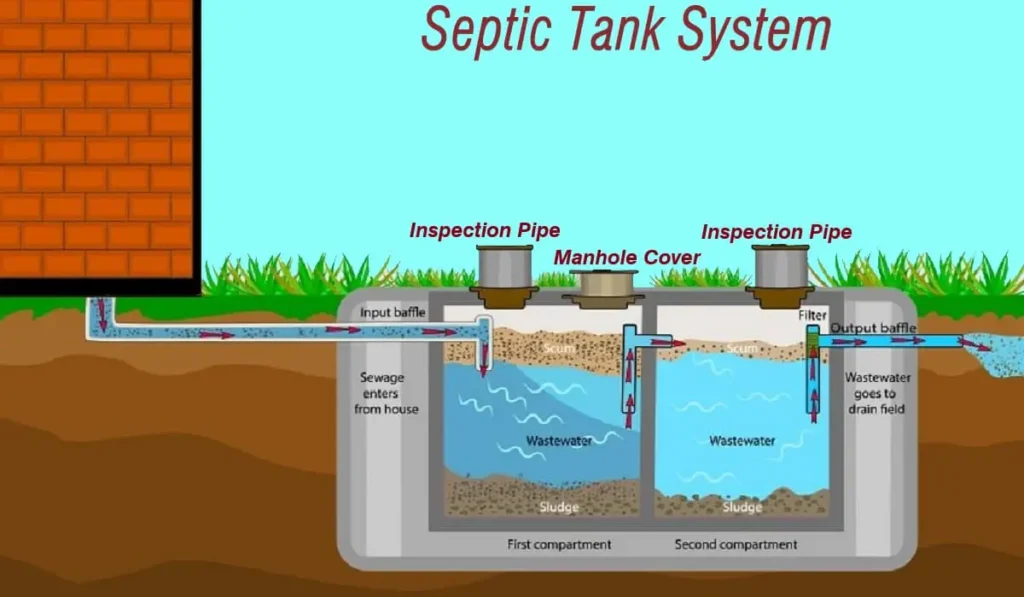
Inspections and Regulations
Importance of Regular Inspections
Regular inspections are crucial for monitoring the condition and performance of your septic tank with a pump chamber. Inspections can help identify any potential issues early on, allowing for timely repairs or maintenance to prevent further damage. They also ensure compliance with local regulations and codes.
It is recommended to have a professional inspect your septic system at least once every three to five years. However, the frequency may vary depending on factors such as the tank size, water usage, and soil conditions. Consult with a local expert to determine the appropriate inspection schedule for your system.
Compliance with Local Regulations and Codes
Complying with local regulations and codes is essential when installing, maintaining, and repairing a septic tank with a pump chamber. The regulations set by local authorities are designed to protect public health, the environment, and surrounding water sources. Failure to comply can result in fines, legal consequences, or unsatisfactory system performance.
Before installing a septic system, research the regulations and codes specific to your area. Obtain any necessary permits and approvals, and work with professionals who are knowledgeable about the local requirements.
Septic Tank with Pump Chamber vs. Conventional Septic Systems
Differences Between Septic Tank with Pump Chamber and Conventional Septic Systems
The main difference between a septic tank with a pump chamber and a conventional septic system is the method of effluent distribution. Conventional systems rely on gravity to move the effluent from the septic tank to the drainfield. In contrast, a pump chamber uses a submersible pump to transport and distribute the effluent.
The use of a pump chamber allows for more control over the distribution and treatment of the effluent. It is particularly beneficial in properties with challenging topography or high water tables where gravity-fed systems are not feasible.
Advantages and Disadvantages of Each
Both septic tank with pump chamber and conventional septic systems have their advantages and disadvantages. Here’s an overview:
Advantages of Septic Tanks with Pump Chambers:
- Suitable for properties with challenging terrain or high water tables
- Allows for more controlled and equal distribution of effluent
- Less susceptible to topographic limitations
- Reduces the risk of system overload and oversaturation
- Offers increased efficiency and performance
Disadvantages of Septic Tanks with Pump Chambers:
- More complex installation and maintenance requirements
- Requires electricity to operate the submersible pump
- Higher upfront costs compared to conventional systems
Advantages of Conventional Septic Systems:
- Simpler installation and maintenance requirements
- No reliance on electricity for effluent transport
- Lower initial cost compared to septic tanks with pump chambers
Disadvantages of Conventional Septic Systems:
- Limited suitability for properties with challenging topography or high water tables
- Greater risk of uneven effluent distribution and oversaturation
- Not as efficient or precise in effluent treatment and distribution
When choosing between a septic tank with a pump chamber and a conventional septic system, consider the specific requirements and limitations of your property. Consult with professionals who can provide expert advice based on your unique situation.

Costs and Considerations
Factors Affecting the Cost of a Septic Tank with Pump Chamber
The cost of a septic tank with a pump chamber can vary depending on several factors. These factors include:
-
System Size: The size and capacity of the septic tank and pump chamber will affect the overall cost. Larger tanks and chambers designed for higher usage will generally be more expensive.
-
Site Conditions: The soil conditions, topography, and water table levels on your property can influence the complexity of the installation and the cost. Challenging terrain or high water tables may require additional measures, such as soil amendments or raised drainfields, which can increase the overall cost.
-
Labor and Material Costs: Labor and material costs can vary depending on the region and the availability of skilled professionals. Obtain multiple quotes from qualified contractors to compare costs and ensure you are getting a fair price.
-
Permits and Approvals: The cost of permits and approvals from local authorities should be factored into the overall cost. Each jurisdiction may have different fees and requirements.
Long-term Cost Analysis
While septic tanks with pump chambers may have higher upfront costs compared to conventional systems, they can offer long-term cost savings. The even distribution and efficient treatment of effluent can lead to reduced maintenance requirements, fewer repairs, and longer-lasting system components.
Consider the long-term cost analysis when choosing a septic system. A higher initial investment may pay off in the form of fewer repairs and a longer lifespan for your system. Consult with professionals to assess the cost-effectiveness of different options based on your specific needs and budget.
Conclusion
A septic tank with a pump chamber is a valuable component of a septic system, particularly in properties with challenging terrain or high water tables. This system allows for more controlled and efficient distribution of wastewater, leading to increased performance and reduced maintenance requirements.
Understanding the function and benefits of a septic tank with a pump chamber is essential for homeowners who rely on these systems. By carefully considering the selection, installation, and maintenance of a septic tank with a pump chamber, homeowners can ensure the proper functioning of their septic system and minimize its environmental impact.
